Baseball, a sport filled with nuances and unique styles, has seen a variety of pitching techniques over the years. One such technique that stands out is the submarine pitch.
Unlike the traditional overhand throw, a submarine pitch is released just above the ground, with the pitcher’s torso bent at a right angle and shoulders tilted so severely that they rotate around a nearly horizontal axis. This distinct style causes the ball to move differently from other pitches, making it a challenge for batters, especially those on the same side as the pitcher.
The ball’s spin isn’t perfectly level, causing it to rotate forward and toward the pitching arm side, making it drop rapidly through the strike zone. While it’s a rarity to see submarine pitchers, mainly because it’s not a natural style and is often learned, those who have mastered it have left an indelible mark on MLB history.
10. Cy Young
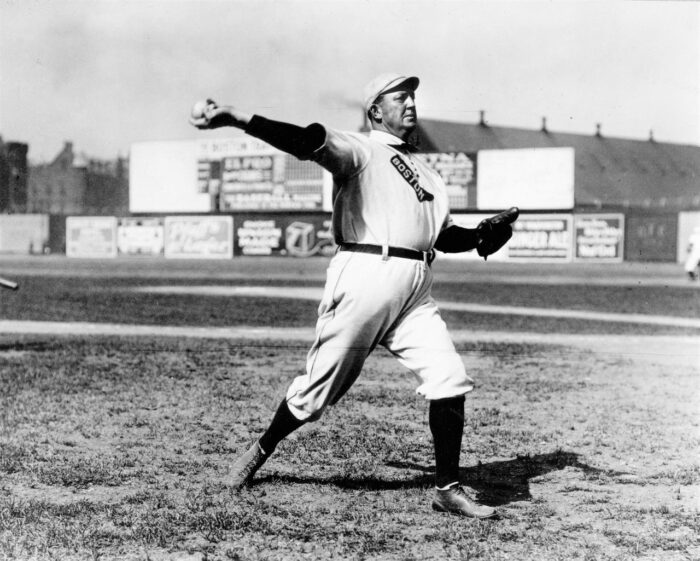
Source: history.com
| Statistic | Value |
| Win-loss record | 511–315 |
| Earned run average | 2.63 |
| Strikeouts | 2,803 |
| MLB debut | August 6, 1890 |
| Last MLB appearance | October 11, 1911 |
| Teams | Cleveland Spiders, St. Louis Perfectos/Cardinals, Boston Americans/Red Sox, Cleveland Naps, Boston Rustlers |
Denton True “Cy” Young (March 29, 1867 – November 4, 1955) was an iconic Major League Baseball (MLB) pitcher. Hailing from Gilmore, Ohio, Young began his professional baseball journey with the Cleveland Spiders in the National League in 1890.
Over the years, Young transitioned from being one of the hardest-throwing pitchers to relying on his impeccable control as his speed waned. By the time he hung up his boots, Young had set numerous pitching records, many of which still stand today. These include the most career wins (511), innings pitched, games started, and complete games. He also pitched three no-hitters, with one of them being a perfect game in 1904.
Young’s legacy in baseball is unparalleled. He was inducted into the National Baseball Hall of Fame in 1937. Recognizing his contributions to the sport, the Cy Young Award was instituted in 1956, a year after his demise. This award is presented annually to the best pitcher in the Major Leagues, further solidifying Young’s name as synonymous with pitching excellence.
9. Mark Eichhorn
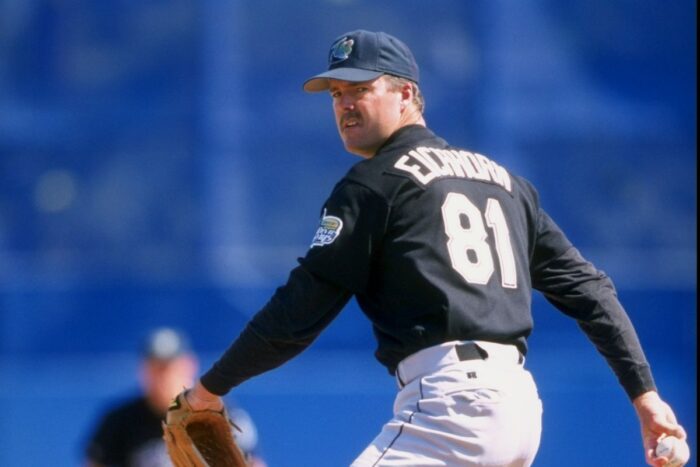
Source: bluebirdbanter.com
| Statistic | Value |
| Win-loss record | 48–43 |
| Earned run average | 3.00 |
| Strikeouts | 640 |
| Saves | 32 |
| MLB debut | August 30, 1982, for the Toronto Blue Jays |
| Last MLB appearance | September 14, 1996, for the California Angels |
| Teams | Toronto Blue Jays, Atlanta Braves, California Angels, Baltimore Orioles |
Born in San Jose, California, on November 21, 1960, Mark Anthony Eichhorn carved a niche for himself in Major League Baseball, predominantly with the Toronto Blue Jays during the late ’80s and early ’90s.
Serving as a crucial middle reliever and set-up man for the renowned All-Star closer Tom Henke, Eichhorn’s 1986 season stands out. He not only clinched the title of the 1986 American League Rookie Pitcher of the Year but also set impressive rookie relief records for the Blue Jays in terms of ERA, games, wins, and strikeouts.
A significant shoulder injury in the early stages of his career forced Eichhorn to adapt. He embraced a submarine-style delivery, a technique where the ball is released just above the ground.
This unique style, combined with his impeccable control, made him a formidable presence on the mound. Eichhorn’s MLB journey saw him play for teams like the Atlanta Braves, California Angels, and Baltimore Orioles, wrapping up his illustrious career on September 14, 1996.
8. Byung-Hyun Kim

Source: mlbtraderumors.com
| Statistic | Value |
| Win-loss record | 54–60 |
| Earned run average | 4.42 |
| Strikeouts | 806 |
| Saves | 86 |
Byung-hyun Kim, born on January 19, 1979, in Gwangju, South Korea, is a former professional baseball pitcher. He is most notably recognized for his time with the Arizona Diamondbacks and the Boston Red Sox. Kim’s pitching style is the submarine. This unique throwing style, combined with his variety of pitches, made him a formidable presence on the mound.
Kim’s most memorable moment came during the 2001 World Series. He gave up consecutive ninth-inning leads in both Game 4 and Game 5. Despite these setbacks, the Diamondbacks went on to win the Championship in 7 games against the New York Yankees.
Kim also had a significant role in the 2002 All-Star Game. Over his career, he faced challenges with balance and injuries, but his resilience and skill always shone through, making him a notable figure in baseball history.
7. Chad Bradford
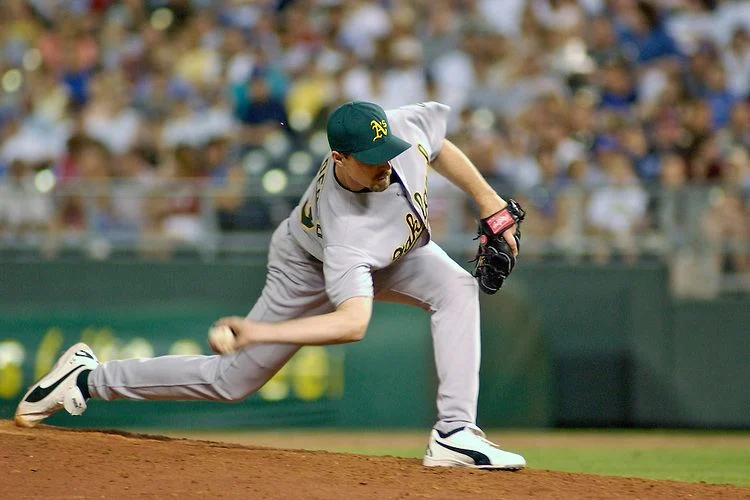
Source: alchetron.com
| Statistic | Value |
| Win-loss record | 36–28 |
| Earned run average | 3.26 |
| Strikeouts | 313 |
| Teams | Chicago White Sox, Oakland Athletics, Boston Red Sox, New York Mets, Baltimore Orioles, Tampa Bay Rays |
Chadwick Lee Bradford, born on September 14, 1974, in Byram, Mississippi, graced the Major League Baseball (MLB) fields from 1998 to 2009. Bradford was known for his distinctive submarine-style delivery, a technique that made him stand out and added an element of surprise to his pitches.
One of the highlights of Bradford’s career was his significant role with the Oakland Athletics, as documented in Michael Lewis’s book “Moneyball.” This book, which was later adapted into a film, delved into the analytical approach to assembling a competitive baseball team on a modest budget.
Bradford’s unique pitching style, combined with his ability to induce ground balls, made him a valuable asset in the bullpen. Throughout his career, he faced challenges, including injuries, but his dedication and unique style always left a mark on the games he played.
6. Ted Abernathy
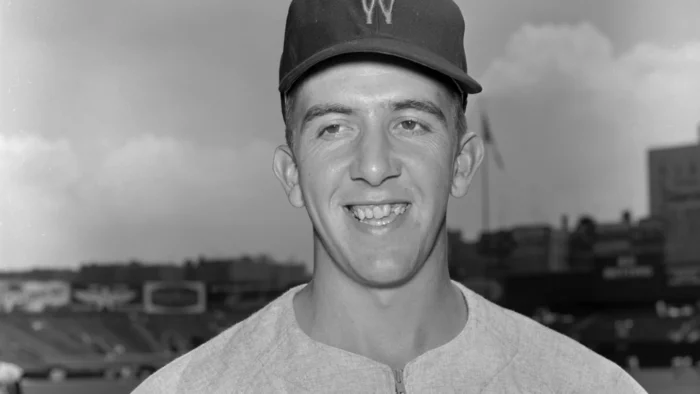
Source: blogredmachine.com
| Statistic | Value |
| Win-loss record | 63–69 |
| Earned run average | 3.46 |
| Strikeouts | 765 |
| Saves | 149 |
| Teams | Washington Senators, Cleveland Indians, Chicago Cubs, Atlanta Braves, Cincinnati Reds, St. Louis Cardinals, Kansas City Royals |
Ted Wade Abernathy, born on March 6, 1933, in Stanley, North Carolina, former MLB player and right-handed pitcher who showcased his skills in 681 games. Notably, 647 of these were as a relief pitcher.
Over the span of his career, which lasted from 1955 to 1972, He was known for his unique submarine-style delivery, which added a layer of unpredictability to his pitches.
Abernathy’s career saw him lead the National League in saves twice, in 1965 and 1967. His 1965 season with the Cubs was particularly remarkable, where he recorded a league-leading 31 saves, along with 104 strikeouts and a 2.57 ERA.
Despite facing challenges, including injuries and changes in teams, Abernathy’s dedication to the sport and his unique pitching style ensured that he left a lasting legacy in the world of baseball.
5. Satchel Paige
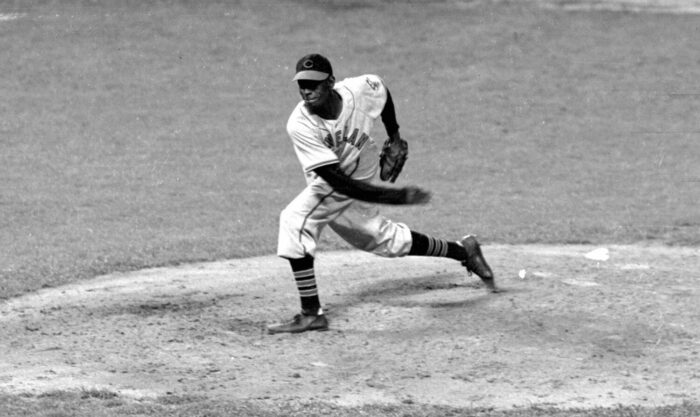
Source: cleveland.com
| Statistic | Value |
| Win-loss record | 118–80 |
| Earned run average | 2.70 |
| Strikeouts | 1,438 |
Leroy Robert “Satchel” Paige (July 7, 1906 – June 8, 1982) was renowned for his tenure in both the Negro league baseball and Major League Baseball (MLB). His illustrious career spanned five decades, culminating in his induction into the National Baseball Hall of Fame.
Paige was a right-handed pitcher who began his professional journey with the Chattanooga Black Lookouts of the Negro Southern League in 1926. He quickly rose to fame, becoming one of the most celebrated and successful players from the Negro leagues.
Paige’s pitching prowess was legendary. He was known for his showmanship, often having his infielders sit down behind him and then striking out the side. At the age of 42, in 1948, he made his MLB debut for the Cleveland Indians, setting a record as the oldest debutant in the National or American League history.
This record was further solidified when he played his last major league game at the age of 59. Paige’s unique submarine-throwing style and his ability to draw crowds made him a significant figure in the integration of baseball. He was the first black pitcher in the American League and the seventh black player in MLB. In 1948, he also became the first player from the Negro leagues to pitch in the World Series, contributing to the Cleveland Indians’ victory that year.
4. Carl Mays
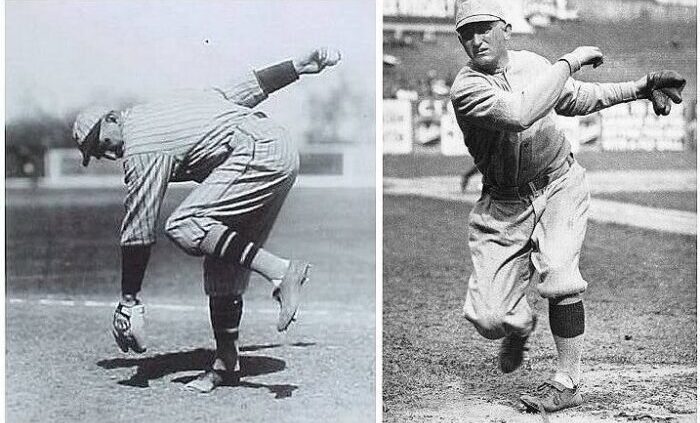
Source: mosportshalloffame.com
| Statistic | Value |
| Win-loss record | 207–126 |
| Earned run average | 2.92 |
| Strikeouts | 862 |
Carl William Mays (November 12, 1891 – April 4, 1971) played 15 seasons in Major League Baseball from 1915 to 1929. Throughout his career, he accumulated over 200 wins, with an impressive 27 wins in 1921 alone.
Mays was a part of four World Series champion teams. His submarine pitch made him a standout in the league. This unique pitching style was not only effective but also became a significant part of his identity in the baseball world.
However, Mays’ career was not without controversy. On August 16, 1920, he threw a pitch that fatally injured Ray Chapman of the Cleveland Indians, marking the only instance in MLB history where a player died as a direct result of an on-field injury.
Despite this tragic incident, Mays continued to have a successful career, showcasing his submarine pitching technique and contributing significantly to his teams. He was known for his exceptional fielding skills and was also a competent batter, often being used as a pinch-hitter.
3. Kent Tekulve
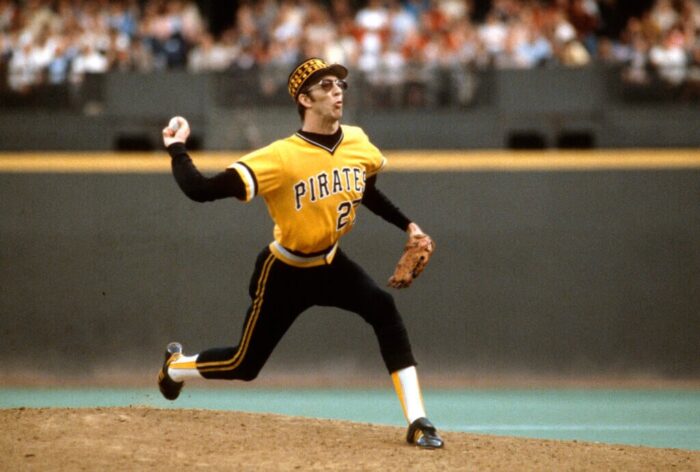
Source: theathletic.com
| Statistic | Value |
| Win–loss record | 94–90 |
| Earned run average | 2.85 |
| Strikeouts | 779 |
| Saves | 184 |
| Teams | Pittsburgh Pirates (1974–1985), Philadelphia Phillies (1985–1988), Cincinnati Reds (1989) |
Kenton Charles Tekulve, commonly known as “Teke”, was born on March 5, 1947, in Cincinnati, Ohio. A former professional baseball right-handed relief pitcher who played an impressive 16 seasons in Major League Baseball (MLB).
Tekulve was renowned for his unique submarine delivery, which made him a standout relief pitcher in the league. This delivery, combined with his durability, made him a workhorse, often appearing in high-pressure situations.
Tekulve’s career is filled with notable achievements. He led the National League in games pitched four times, and remarkably, he appeared in 90 or more games three times. His performance in the 1979 World Series was instrumental, where he recorded three saves, helping the Pirates clinch the championship against the Baltimore Orioles.
Beyond his playing days, Tekulve has remained connected to baseball, serving as an analyst and being involved in various baseball-related activities. His contribution to the sport, both on and off the field, has solidified his place in baseball history.
2. Brad Ziegler
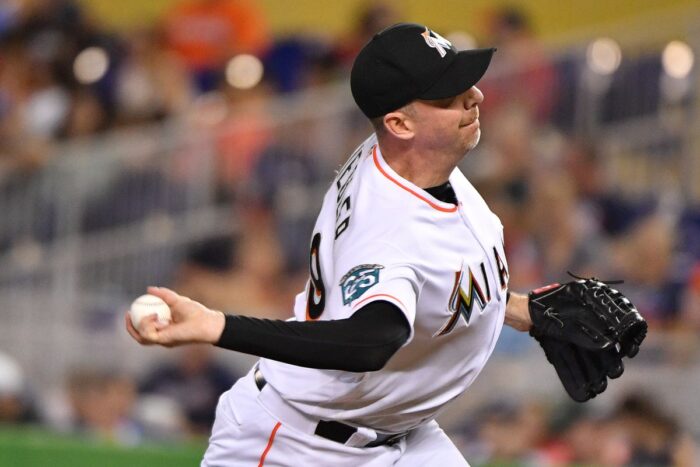
Source: fishstripes.com
| Statistic | Value |
| Win–loss record | 37–38 |
| Earned run average | 2.75 |
| Strikeouts | 479 |
| Saves | 105 |
| Teams | Oakland Athletics (2008–2011), Arizona Diamondbacks (2011–2016), Boston Red Sox (2016), Miami Marlins (2017–2018), Arizona Diamondbacks (2018) |
Brad Gregory Ziegler, born on October 10, 1979, in Pratt, Kansas, showcased his skills his claim to fame being the distinctive submarine delivery, making him one of the few pitchers in the MLB to utilize this technique.
Throughout his career, Ziegler achieved several milestones. He set an American League record for consecutive scoreless innings to start an MLB career, reaching 23 innings. This feat surpassed the previous record set by Dave Ferriss of the Boston Red Sox in 1945.
Ziegler’s submarine delivery not only made him a unique presence on the mound but also contributed to his effectiveness as a relief pitcher. His dedication to the sport and his unique pitching style have left an indelible mark on baseball history.
1. Gene Garber
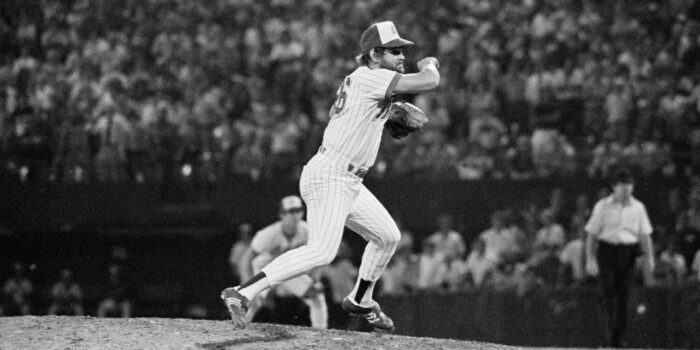
Source: mlb.com
| Statistic | Value |
| Win-loss record | 96–113 |
| Earned run average | 3.34 |
| Strikeouts | 940 |
| Saves | 218 |
| Teams | Pittsburgh Pirates (1969–1970, 1972), Kansas City Royals (1973–1974), Philadelphia Phillies (1974–1978), Atlanta Braves (1978–1987), Kansas City Royals (1987–1988) |
Top on our list, Henry Eugene Garber, known as Gene Garber, was born on November 13, 1947, in Lancaster, Pennsylvania. He for four Major League Baseball (MLB) organizations from 1969 to 1988.
Garber’s unique side-arm, submarine-style delivery was his signature on the mound. This herky-jerky motion, combined with his effective change-up, made him a formidable opponent for batters.
One of the most notable moments in his career was when he faced Pete Rose of the Cincinnati Reds on August 1, 1978. With the Braves leading 16–4 in the top of the ninth inning, Rose, who was on a hitting streak, came to bat with two outs. Garber struck him out, preventing Rose from setting a new National League hitting streak record. With 141 games saved for the Braves,
Garber ranks third on the team’s all-time saves list, showcasing his significant contribution to the sport.
FAQ
What is a submarine pitch in baseball?
A submarine pitch in baseball refers to a unique delivery style where the ball is released just above the ground, but not underhanded. The pitcher’s torso bends at a right angle, and the shoulders tilt so severely that they rotate around a nearly horizontal axis.
This is in contrast to the underhand softball pitch where the torso remains upright, the shoulders are level, and the hips do not rotate. The submarine pitch’s “upside-down” release causes the ball to move differently from pitches generated by other arm slots, often making it challenging for batters to hit.
How does the movement of a submarine pitch differ from other pitches?
The movement of a submarine’s pitch is influenced significantly by gravity. The ball must be thrown considerably above the strike zone, after which it drops rapidly back through. The sinking motion of the submariner’s fastball is enhanced by forward rotation, contrasting with the overhand pitcher’s hopping backspin.
This unique spin is not perfectly level; the ball rotates forward and toward the pitching arm side, making it especially tough for same-side batters to hit.
Why are submarine pitchers rare in MLB?
The rarity of submarine pitchers can be attributed to their unconventional technique. It is not typically a natural style of throwing but is often learned. Since the majority of pitchers use an overarm motion, most young pitchers are encouraged to throw overhand. Additionally, the bending motion required for submarine pitching might pose a risk of developing back problems, although it’s believed that the submarine motion is less injurious to the elbow and shoulder.
Conclusion
The world of baseball has been graced by many talented players, each bringing their unique flair to the game. Among them, submarine pitchers have carved a niche, showcasing a rare and challenging technique that has both baffled and entertained fans for generations.
From the early days of Cy Young to the modern era with players like Gene Garber, these pitchers have showcased the art of the submarine pitch, proving that with dedication and skill, one can master even the most unconventional techniques. As we celebrate these remarkable players, it’s essential to remember the diversity of styles and eras they represent, emphasizing the ever-evolving nature of baseball.
So, the next time you watch a game, keep an eye out for that distinct submarine pitch and appreciate the skill and dedication it takes to perfect it.
